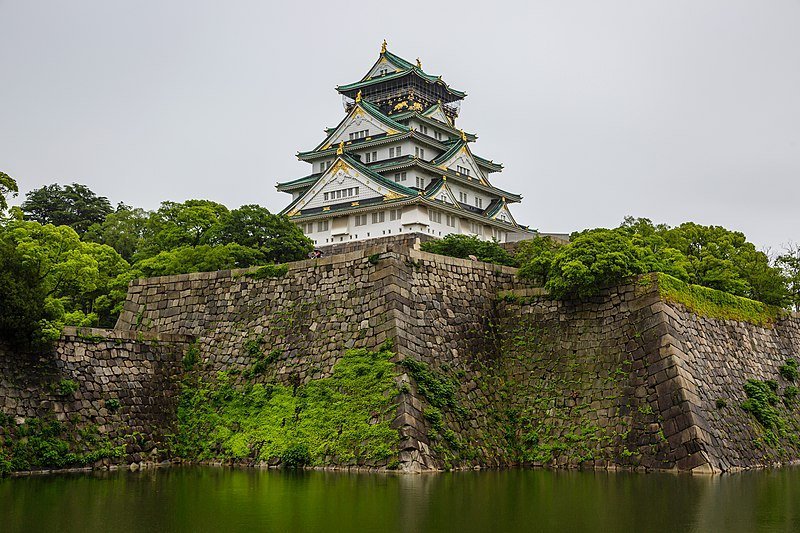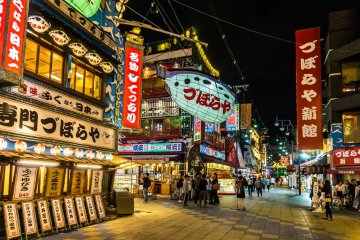
Osaka Castle
Osaka Castle is one of the city’s most iconic sites and draws numerous visitors to its spacious park and imposing keep every year. Osaka Castle was first built by warlord Toyoto...

El Parque del Castillo de Osaka es un parque urbano público y un sitio histórico en la prefectura del mismo nombre. Es el segundo parque más grande de la ciudad y en combinación con el Castillo de Osaka, es un lugar popular para tomar fotografías.
El parque del castillo está ubicado en el sur de Ōkawa y ocupa una gran área en el centro de la ciudad de Osaka, un total de unos dos kilómetros cuadrados. Además de amplios espacios verdes e instalaciones deportivas, también incluye una arena de usos múltiples (Osakajo Hall) y un santuario dedicado a Toyotomi Hideyoshi, un comandante y político japonés que hizo una contribución decisiva a la unificación del Japón moderno y construyó el Castillo de Osaka en 1583 para gobernar Japón desde allí.
A principios de Abril, el Parque del Castillo de Osaka es uno de los lugares más populares para ver las flores de cerezo en su esplendor.

Osaka Castle is one of the city’s most iconic sites and draws numerous visitors to its spacious park and imposing keep every year. Osaka Castle was first built by warlord Toyoto...

Dotonbori es EL lugar para vivir la noche en Osaka. ¿Buscas comida rica, barata y auténtica? Te llevo a mis spots secretos donde comen los locales.

El Teatro Nacional Bunraku es un complejo de dos salas y salas de exposición ubicado en Chūō-ku, Osaka. El teatro es ahora uno de los pocos lugares donde se puede ver la fascinante forma de arte del Bunraku. El arte de Bunraku es el nombre que se le da al teatro de marionetas japonés Ningyō jōruri y se identifica por tener tres distintas artes escénicas en sus obras: marionetas, recitación a cargo del narrador y música del shamisen, un instrumento musical japonés de tres cuerdas. El complejo se inauguró en 1984 como el cuarto teatro nacional del país y se convirtió en la sede del Bunraku. El Teatro Nacional está a cargo del Consejo de las Artes de Japón, un organismo administrativo independiente del Ministerio de Educación, Cultura, Deportes, Ciencia y Tecnología. Hay programas en inglés y auriculares disponibles. Las representaciones suelen tener lugar a intervalos de tres semanas en los meses de Enero, Abril, Junio, Julio/Agosto y Noviembre con dos presentaciones diarias regularmente.

Kuromon Market, or Kuromon Ichiba, is a staple destination among tourists and residents alike thanks to its abundance of fresh fish, meat, fruits, vegetables, sweets, clothes, and household/ miscellaneous items. The over 170-year old shopping street extends 580-meters long and is home to approximately 150 shops. Peruse large, commercialized shops alongside mom-and-pop spots and immerse yourself in the preserved food culture of Osaka. The lively atmosphere of shoppers, street food vendors, and tantalizing aromas will make for an unforgettable shopping experience. The historic market, officially established in 1902 with the name Enmyoji Ichiba, quickly gained the nickname Kuromon Ichiba, which translates to Black Gate Market, due to the nearby Enmyoji Temple’s renowned black-painted gate. Although the temple was completely destroyed by fire in the early 20th century, the market’s name still persists today. Although Kuromon Market has become a popular tourist destination, it still retains an authentic feel thanks to its local shoppers, cultural offerings, and down-to-earth vibes. The street is full of exciting finds, so be sure to explore them all! Pick up some preserved and pickled vegetables, wasabi root, bamboo shoots, wagyu beef, fugu (blowfish), strawberry daifuku (mochi covered strawberries), anime merchandise, or second-hand kimonos, to name a few. Given that you are surrounded by food, why not try some as well? Thankfully, the market is a hotspot for street food and quick bites on the go. Try some takoyaki, grilled scallops, sushi, oden (assortment of meat skewers, meatballs, fishcake, and daikon radish in a light soy-flavored dashi broth), kushisei (deep-fried meat skewers), okonomiyaki, fresh fruit juice, and so much more. Make sure you come to the market hungry and enjoy Osaka’s cuisine! As you explore the market please be mindful of your trash and support the cleanliness of the area. Towards the southern end of the market is the Kuromon Information Center. The center is a wonderful place to unwind after hours of walking and offers a seating area, toilets, a diaper changing table, a baggage counter, a currency exchange machine, and Chinese- and English-speaking staff onsite.

Dotonbori es una calle de Osaka que corre paralela al canal del mismo nombre, es una de las atracciones más famosas de la ciudad y se encuentra en el distrito de Namba de Chuo. Es particularmente conocida por sus numerosos restaurantes, bares y coloridos letreros de neón. La primera piedra de Dotonbori se colocó en 1612, cuando el empresario Yasui Doton quiso construir un canal allí para conectar los dos brazos del río Yokobi y así hacer que el área fuera más atractiva para el comercio. En 1621 el área fue conquistada por el Shogunato Tokugawa y desde entonces se ha llamado Dotonbori (literalmente Canal Doton) y declarado distrito de entretenimiento de Osaka. Hoy encontrará allí una variedad de los restaurantes, bares y puestos de comida más famosos de Osaka. El área es particularmente popular por la noche ya que los edificios están cubiertos por innumerables letreros de neón de colores. Por ejemplo, muchos de los restaurantes se anuncian con letreros grandes, a veces tridimensionales, como el cangrejo de seis metros y medio de altura en el restaurante Kani Doraku.